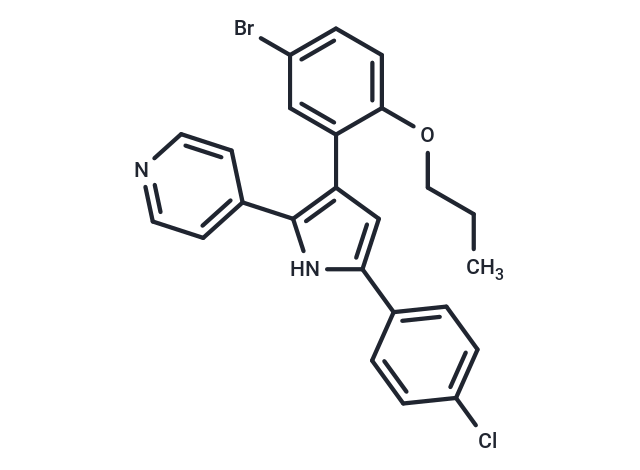Shopping Cart
- Remove All
 Your shopping cart is currently empty
Your shopping cart is currently empty

L-168049 is a selective and non-competitive antagonist of human glucagon receptor with IC50s of 3.7 nM, 63 nM, and 60 nM for human, murine, and canine, respectively.

| Pack Size | Price | Availability | Quantity |
|---|---|---|---|
| 1 mg | $48 | In Stock | |
| 5 mg | $113 | In Stock | |
| 10 mg | $189 | In Stock | |
| 25 mg | $397 | In Stock | |
| 50 mg | $589 | In Stock | |
| 100 mg | $843 | In Stock | |
| 500 mg | $1,730 | In Stock | |
| 1 mL x 10 mM (in DMSO) | $125 | In Stock |
| Description | L-168049 is a selective and non-competitive antagonist of human glucagon receptor with IC50s of 3.7 nM, 63 nM, and 60 nM for human, murine, and canine, respectively. |
| Targets&IC50 | Glucagon receptor (human):3.7 nM (IC50), Glucagon receptor (murine):63 nM (IC50), Glucagon receptor (canine):60 nM (IC50) |
| In vitro | In Chinese hamster ovary cells expressing the human glucagon receptor, L-168049 increases the apparent EC50 of glucagon-stimulated adenylate cyclase and decreases maximal glucagon stimulation with a Kb of 25 nM[1]. L-168049 blocks glucagon-stimulated cAMP formation in mouse liver membrane and inhibits glucagon (100 pM)-stimulated cAMP synthesis in CHO cells expressing the human glucagon receptor with IC50 of 41 nM [3]. |
| In vivo | In the liver of L-G6pc-/- mice, L-168049 (50 mg/kg body; p.o.) reduces Pck1 mRNA expression by half within 6 hours. L-168049 prevents the increase in G6pc expression in the kidney and gut [2]. |
| Alias | L-168,049 |
| Molecular Weight | 467.79 |
| Formula | C24H20BrClN2O |
| Cas No. | 191034-25-0 |
| Smiles | CCCOc1ccc(Br)cc1-c1cc([nH]c1-c1ccncc1)-c1ccc(Cl)cc1 |
| Relative Density. | 1.367g/cm3 |
| Storage | Powder: -20°C for 3 years | In solvent: -80°C for 1 year | Shipping with blue ice. | ||||||||||
| Solubility Information | Ethanol: 3.4 mM, Sonication is recommended. DMSO: insoluble | ||||||||||
Solution Preparation Table | |||||||||||
Ethanol
| |||||||||||

Copyright © 2015-2025 TargetMol Chemicals Inc. All Rights Reserved.